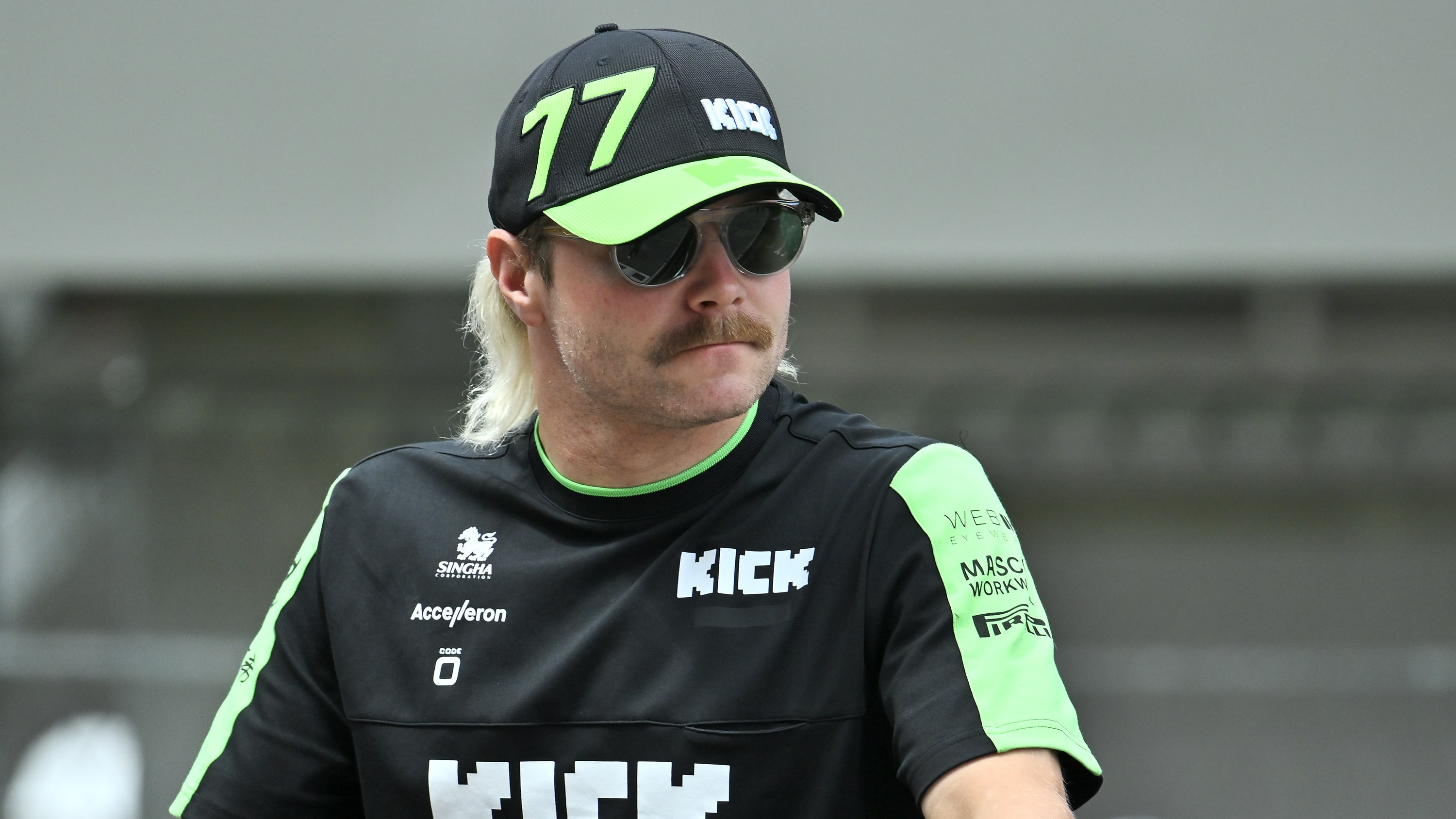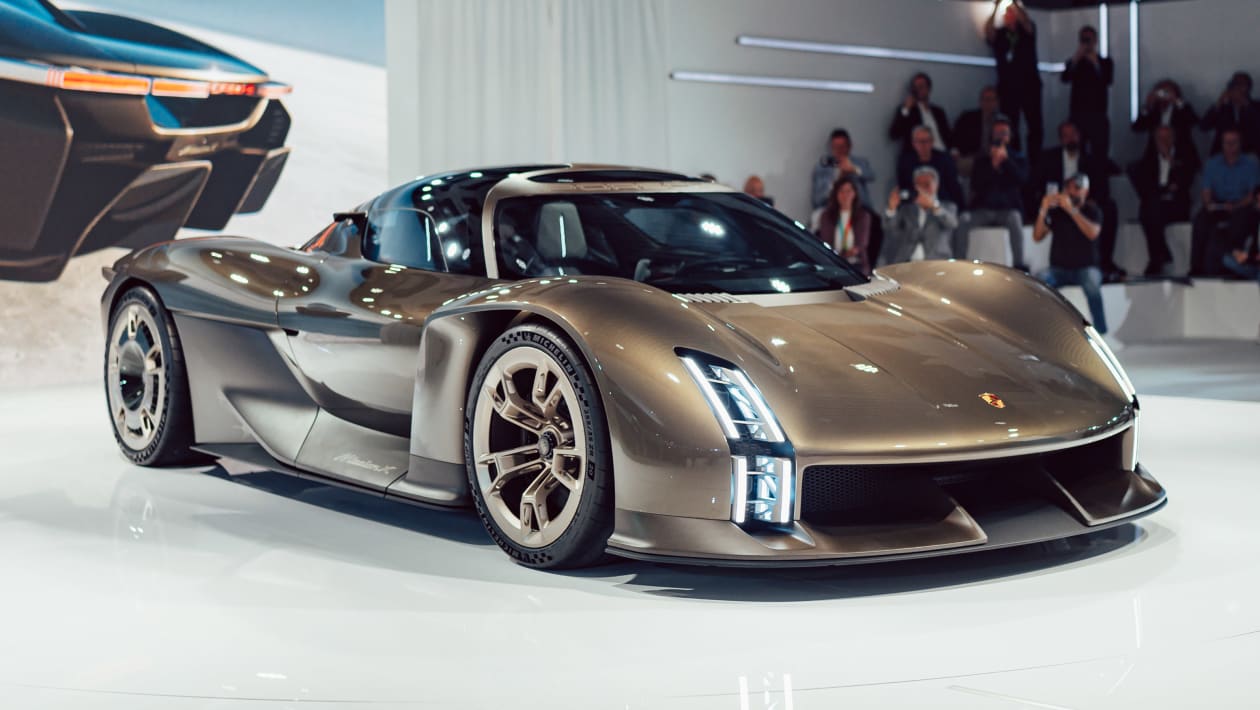R35 GT-R Production Ends - Skylines R36 Hybrid Future.
The iconic Nissan R35 GT-R has been officially cancelled after 18 years. Discover why production ended and Nissan's exciting plans for the hybrid R36 GT-R arriving by 2030.

TL;DR - Key Takeaways
-
The R35 GT-R has officially ended production after an incredible 18-year run, with the final vehicles rolling off the production line in early 2025
-
Regulatory compliance and parts availability were primary factors forcing Nissan to discontinue the legendary supercar
-
The R36 GT-R is confirmed for 2028-2030 featuring hybrid technology, solid-state batteries, and maintaining the turbocharged heritage that made Godzilla famous
The automotive world experienced a seismic shift when Nissan officially announced the cancellation of the R35 GT-R, bringing an end to one of the most influential supercars of the 21st century. After 18 extraordinary years of production, Nissan commemorated the end of production for the R35 GT-R, as assembly for the Japan domestic market - the final sales region for the model - concluded. This momentous occasion marks not just the end of a production run, but the closing of a chapter that redefined what affordable performance could achieve.
The R35 GT-R cancellation didn't happen overnight. Industry insiders had been speculating about the model's future for years, particularly as global emissions regulations became increasingly stringent and the automotive landscape shifted toward electrification. The writing was on the wall when Japanese publication Mag X reported that Nissan told Japanese dealers this would be the R35 generation's last year of production due to the inability to produce parts in the future. This revelation sent shockwaves through the GT-R community, from weekend warriors to professional tuners who had built entire businesses around the platform.

The Final Curtain Call: Understanding the R35's Retirement
The Nissan R35 discontinuation represents far more than a simple model refresh cycle. Launched in 2007 as a technological tour de force, the R35 GT-R fundamentally changed the supercar landscape with its democratization of supercar performance. At a time when exotic manufacturers were charging astronomical sums for similar capability, Nissan delivered Godzilla to the masses at a fraction of the cost. The twin-turbocharged VR38DETT engine became the stuff of legends, with its robust architecture proving capable of handling massive power increases that would destroy lesser powertrains.
The decision to cancel the R35 GT-R wasn't taken lightly by Nissan's executive team. Multiple factors converged to make continuation of the current generation untenable. Regulatory pressures played a significant role, as modern safety and emissions standards required substantial investment to bring the aging platform into compliance. The R35's basic architecture, while revolutionary in 2007, had been stretched to its limits through nearly two decades of continuous development. Engineers had extracted virtually every ounce of performance from the platform, making further significant improvements increasingly difficult and expensive.
Perhaps most critically, the supply chain challenges that began affecting the automotive industry in recent years hit the GT-R program particularly hard. Many of the specialized components required for R35 production were sourced from suppliers who had either discontinued certain parts or found it economically unviable to continue small-volume production runs. The hand-built nature of many GT-R components, while contributing to the car's special character, made it vulnerable to supply disruptions that affected mass-market vehicles less severely.
The final R35 production numbers tell a story of exclusivity that few modern supercars can match. Of the alleged 1,500 to come off production lines for 2025, 300 are said to be the Nismo trim, making these final examples instant collector's items. The T-spec Takumi and Skyline Editions served as fitting send-offs for a platform that had achieved legendary status among enthusiasts worldwide. These special editions represented not just the culmination of R35 development, but a bridge between the analog past and the electrified future that awaits the GT-R nameplate.
For the tuning community, the R35 cancellation marks the end of an era that saw the platform evolve from a 480-horsepower factory offering to monsters capable of transforming into 8-second quarter-mile beasts. The aftermarket support that developed around the VR38DETT engine was unprecedented, with companies like Top Secret developing body kits and performance upgrades that pushed the boundaries of what was thought possible from a production-based platform.

The Regulatory Reality Behind the Cancellation
The cancellation of the R35 GT-R cannot be understood without examining the regulatory landscape that modern automakers navigate. Global emissions standards have become increasingly stringent, particularly in key markets like Europe and California. The R35's twin-turbocharged V6 engine, while efficient for its power output, represented technology that was nearly two decades old. Bringing the platform into compliance with current and future emissions regulations would have required a complete redesign of the powertrain, effectively creating an entirely new vehicle.
Safety regulations presented another insurmountable challenge for the aging R35 platform. Modern crash test requirements, pedestrian safety standards, and advanced driver assistance system mandates would have necessitated extensive structural modifications to the GT-R's fundamental architecture. The cost of such comprehensive updates, combined with the relatively low production volumes that the GT-R commanded, made continued development economically unfeasible. Nissan's decision-makers faced the reality that the investment required to modernize the R35 would be better allocated toward developing its revolutionary replacement.
The parts availability crisis that ultimately sealed the R35's fate reflects broader changes in the automotive supply chain. Many of the specialized components that made the GT-R exceptional were produced by suppliers in limited quantities. As these suppliers shifted focus to higher-volume programs or were acquired by larger companies with different priorities, maintaining the complex web of vendors required for R35 production became increasingly challenging. The semiconductor shortages that plagued the industry in recent years only accelerated this trend, making it clear that continuing R35 production would face ongoing supply chain vulnerabilities.

The R36 GT-R: A Hybrid Future for Godzilla
While the cancellation of the R35 marked the end of one era, Nissan's confirmation of the R36 GT-R signals the beginning of an even more exciting chapter. The R36 GT-R is expected within three to five years, with hybrid power that will remain turbocharged while adding electrons. This hybrid approach represents Nissan's commitment to maintaining the GT-R's performance heritage while embracing the technological evolution required for future relevance.
The R36 GT-R hybrid system promises to deliver unprecedented performance while meeting stringent emissions requirements. Unlike many hybrid supercars that sacrifice the visceral engine experience for environmental compliance, Nissan's approach maintains the turbocharged foundation that made Godzilla famous. The addition of electric motors will likely provide instant torque delivery that eliminates turbo lag entirely, creating a driving experience that surpasses even the most highly tuned R35 variants.
The timeline for the R36 GT-R aligns with Nissan's plans for solid-state battery production, which has been shifted to about 2028. This technological alignment suggests that the next-generation GT-R will benefit from cutting-edge battery technology that offers superior energy density and charging speeds compared to conventional lithium-ion systems. The integration of solid-state batteries could enable the R36 to offer meaningful electric-only driving range while maintaining the lightweight characteristics essential for track performance.
The R36's hybrid architecture is expected to build upon lessons learned from Nissan's Formula E program and the development of the Ariya electric crossover. Engineers have spent years optimizing electric motor integration, battery thermal management, and regenerative braking systems that will directly benefit the next GT-R. The result should be a vehicle that delivers the raw performance that GT-R enthusiasts demand while offering the efficiency and technological sophistication required in the modern automotive landscape.
Performance projections for the R36 GT-R suggest power outputs exceeding 600 horsepower, with torque figures that could reach unprecedented levels thanks to electric motor assist. The hybrid system's ability to provide consistent power delivery regardless of engine RPM promises to revolutionize the GT-R driving experience, potentially making it even more accessible to drivers of varying skill levels while raising the performance ceiling for experts.

Impact on the Tuning Community and Enthusiast Market
The R35 GT-R cancellation sends ripples throughout the global tuning community that built empires around the platform. Companies that specialized in GT-R modifications face an uncertain future as the supply of new donor vehicles ends and the existing fleet ages. However, the robust nature of the VR38DETT engine and the platform's proven durability suggest that the tuning scene will remain vibrant for years to come. Examples like Chris Phan's 2010 GTR GT3 demonstrate the incredible potential that remains locked within existing R35 chassis.
The collectible value of R35 GT-Rs, particularly special editions and low-mileage examples, has already begun appreciating as news of the cancellation spread. The final T-spec and Skyline editions are commanding premiums that reflect their status as the last of their kind. Enthusiasts who previously viewed GT-Rs as consumable performance tools are now reconsidering their approach, with many choosing to preserve examples for posterity rather than subjecting them to aggressive modifications.
For the aftermarket industry, the transition period between R35 and R36 represents both challenge and opportunity. While the end of new R35 production limits the potential customer base for traditional modifications, it also creates demand for restoration parts and specialist services as existing owners seek to maintain their vehicles in peak condition. Companies like Top Secret, known for their innovative body kits and performance solutions, are adapting their strategies to focus on supporting the existing R35 fleet while preparing for the hybrid challenges that the R36 will present.
The knowledge base accumulated by the tuning community over the R35's 18-year production run represents an invaluable resource that won't simply disappear. Master technicians who spent decades perfecting GT-R tuning techniques will likely find their expertise increasingly valuable as the platform transitions from commonplace to exotic. The community's understanding of the VR38DETT engine's capabilities, demonstrated in builds like Jair Martinez's Rocket Bunny R35, provides a foundation for keeping existing GT-Rs performing at their peak for decades to come.

The Technology Evolution: From R35 to R36
The technological leap between the R35 and R36 GT-R represents more than just an generational update; it embodies a fundamental reimagining of what a GT-R can be. The R35's success was built on relatively straightforward principles: a powerful twin-turbo V6, sophisticated all-wheel drive, and advanced electronics packaged in an accessible format. The R36's hybrid approach adds layers of complexity that promise to deliver performance improvements that seemed impossible with traditional powertrains alone.
Battery integration in the R36 will likely follow the lessons learned from successful hybrid supercars while avoiding the pitfalls that have plagued some early attempts at electrified performance cars. The solid-state battery technology that Nissan is developing promises superior thermal characteristics compared to conventional lithium-ion systems, addressing one of the primary concerns with track-focused hybrid vehicles. Proper thermal management will be crucial for maintaining consistent performance during extended track sessions, a hallmark of GT-R capability that cannot be compromised in the transition to electrification.
The electric motor placement and integration strategy for the R36 will significantly influence its character and capabilities. Front and rear motor configurations could provide torque vectoring capabilities that surpass even the most advanced mechanical all-wheel drive systems. The instantaneous response of electric motors eliminates the turbo lag that, while minimized in later R35 variants, still represented a limitation of the turbocharged approach. The result should be a vehicle that delivers the tractability and ease of use that made the R35 famous while pushing performance boundaries even further.
Regenerative braking systems in the R36 GT-R will need to be carefully calibrated to maintain the precise pedal feel and modulation that track driving demands. The challenge lies in seamlessly blending mechanical and regenerative braking forces while providing the consistent, predictable response that allows drivers to extract maximum performance. The system must also manage heat dissipation effectively, as track use generates thermal loads that can overwhelm inadequately designed regenerative systems.

Global Market Implications and Availability
The R35 GT-R's global farewell occurs at a time when the supercar market faces unprecedented challenges and opportunities. Regional emissions regulations, import restrictions, and changing consumer preferences have all influenced Nissan's decision-making regarding the GT-R's future. The R36 development program must navigate this complex landscape while delivering a product that maintains the GT-R's accessible performance philosophy across diverse global markets.
European market regulations have become particularly stringent, with emissions standards and sound restrictions that posed increasing challenges for the R35 platform. The R36's hybrid architecture should address these concerns while potentially opening new markets that had become inaccessible to the traditional GT-R formula. The ability to operate in electric-only mode could allow access to city centers and regions with strict internal combustion engine restrictions, expanding the GT-R's usability beyond its traditional performance-focused role.
The North American market, which represented a crucial customer base for the R35, presents both opportunities and challenges for the R36. American consumers have shown strong interest in hybrid performance vehicles, as demonstrated by the success of models like the Corvette E-Ray and various hybrid supercars. However, the market also values the raw, unfiltered experience that made the R35 special. Nissan must balance these competing demands while ensuring that the R36 delivers the performance progression that justifies its development costs.
Japanese domestic market preferences continue to influence GT-R development, as Japan remains the spiritual home of the platform. The country's embrace of advanced technology and hybrid systems positions it as an ideal testing ground for R36 concepts. Japanese enthusiasts' appreciation for engineering excellence and attention to detail will likely drive many of the refinements that distinguish the R36 from its competitors.

The End of the VR38DETT Era
The VR38DETT engine's retirement with the R35 marks the end of one of the most celebrated powertrains in modern automotive history. This twin-turbocharged 3.8-liter V6 became synonymous with accessible supercar performance, proving that extraordinary power and reliability could coexist in a package that didn't require exotic maintenance procedures or astronomical service costs. The engine's robust architecture enabled everything from daily driving to extreme track use, while its modification potential allowed enthusiasts to explore power levels that would have been unimaginable from factory configuration.
The hand-built heritage of each VR38DETT engine added a personal touch that distinguished the GT-R from mass-produced alternatives. Each engine was assembled by a single technician whose signature plate became a badge of honor for GT-R owners. This attention to individual craftsmanship created an emotional connection between owner and machine that transcended mere mechanical appreciation. The loss of this human element in the transition to hybrid technology represents one of the most significant philosophical changes in the GT-R's evolution.
Tuning potential of the VR38DETT became legendary within the performance community, with examples like Kit Chan's 2017 Nissan GTR NISMO journey demonstrating the extraordinary heights that could be achieved with proper modification. The engine's ability to handle massive power increases while maintaining reasonable reliability made it a favorite among professional builders and weekend enthusiasts alike. The aftermarket industry developed around the VR38DETT created an ecosystem of knowledge and components that will continue supporting existing R35s long after production has ended.
The thermal management characteristics of the VR38DETT set new standards for turbocharged engines, with sophisticated cooling systems that enabled consistent performance even under extreme conditions. This attention to thermal control became a defining characteristic of GT-R ownership, as the car could be driven hard repeatedly without the power degradation that plagued many contemporary performance vehicles. The lessons learned from VR38DETT thermal management will undoubtedly influence the R36's hybrid cooling systems, as managing battery and motor temperatures becomes equally critical for sustained performance.

Looking Ahead: What the R36 Means for Performance Cars
The R36 GT-R's hybrid approach positions it as a potential game-changer in the evolving supercar landscape. Rather than simply adding electric motors for emissions compliance, Nissan appears committed to using electrification as a tool for performance enhancement. This philosophy aligns with the original GT-R mission of delivering maximum capability through innovative technology rather than traditional approaches like larger displacement engines or exotic materials.
Solid-state battery integration in the R36 could establish new benchmarks for hybrid supercar capability. The superior energy density and thermal characteristics of solid-state technology promise to address many of the limitations that have constrained earlier hybrid performance vehicles. If successfully implemented, this technology could enable the R36 to offer meaningful electric-only range for urban driving while providing sustained high-performance capability that exceeds purely internal combustion alternatives.
The competitive landscape that awaits the R36 includes established players like Porsche's hybrid 911 variants and emerging competitors from both traditional manufacturers and new electric performance brands. Nissan's challenge lies in maintaining the GT-R's value proposition while delivering performance that justifies the additional complexity and cost of hybrid technology. The brand's reputation for engineering excellence and performance accessibility will be crucial factors in the R36's market success.
Integration challenges between electric and combustion power sources represent the most critical aspect of R36 development. The seamless coordination between these systems must preserve the intuitive driving experience that made the R35 accessible to drivers of varying skill levels while enhancing the performance ceiling for expert users. Success in this area could establish the R36 as the definitive hybrid supercar, while failure could undermine the GT-R's hard-earned reputation for user-friendly performance.

The Cultural Impact of R35 Cancellation
The cultural significance of the R35 GT-R extends far beyond its mechanical specifications or sales figures. For nearly two decades, it served as automotive democracy's flagship, proving that extraordinary performance didn't require seven-figure price tags or exotic pedigrees. The car became a symbol of accessible excellence that inspired countless enthusiasts to pursue their performance dreams. Its cancellation marks the end of an era when such capabilities could be achieved without hybrid complexity or electrified assistance.
Social media tributes and enthusiast gatherings celebrating the R35's legacy demonstrate the emotional connection that owners and admirers developed with the platform. Examples like the 2012 LBWK Takumi Masters build showcase how the GT-R became a canvas for personal expression and automotive artistry. The community that formed around the R35 transcended traditional brand loyalty, creating bonds between owners who shared appreciation for the car's unique combination of performance and practicality.
The influence on competitors during the R35's production run cannot be overstated. Its combination of advanced technology, reasonable pricing, and exceptional capability forced established supercar manufacturers to reconsider their approaches. The democratization of features like launch control, advanced all-wheel drive, and sophisticated aerodynamics can be traced directly to the competitive pressure that the GT-R created. This technological diffusion ultimately benefited the entire performance car segment, raising standards across all price points.
Media coverage of the R35's cancellation reflects its unique position in automotive history. Unlike typical model discontinuations that generate modest industry interest, the GT-R's retirement has sparked extensive analysis and retrospective coverage that typically accompanies the end of automotive icons. This attention underscores the cultural impact that the platform achieved beyond its primary mission as a performance vehicle.

Technical Legacy and Future Influence
The engineering innovations pioneered in the R35 GT-R continue influencing automotive development across multiple manufacturers and market segments. The car's approach to all-wheel drive torque distribution, launch control systems, and aerodynamic management established new standards that competitors continue to reference. These technological contributions ensure that the R35's influence will persist long after the final examples have left the production line.
Data acquisition and telemetry systems that debuted in the GT-R helped democratize track-focused technology that was previously available only in race cars or exotic supercars. The ability for owners to analyze their driving performance and vehicle behavior through sophisticated onboard systems changed how enthusiasts approached performance driving. This emphasis on data-driven improvement has become standard practice in the performance car segment, with manufacturers regularly including telemetry capabilities in their flagship offerings.
The development methodology employed for the R35 program, which emphasized continuous improvement rather than traditional model cycles, influenced how modern performance cars are developed and updated. The GT-R's approach of implementing incremental improvements throughout its production run allowed engineers to refine the platform based on real-world feedback rather than relying solely on pre-production testing. This philosophy has been adopted by numerous manufacturers seeking to optimize their performance offerings throughout their lifecycle.
Manufacturing techniques developed for R35 production, particularly the hand-assembly process for the VR38DETT engine, demonstrated that artisanal approaches could coexist with modern production methods. The individual attention given to each engine created quality standards and owner satisfaction levels that mass production typically cannot achieve. While the R36 will likely embrace more automated production methods, the lessons learned from the R35's human-centered approach will influence how manufacturers balance efficiency with craftsmanship.

The Collector Car Evolution
The immediate collectibility of final R35 variants reflects the market's recognition of the platform's historical significance. Special editions like the T-spec and Skyline models are already commanding premiums that suggest strong future appreciation potential. The combination of limited production numbers, technological significance, and cultural impact creates conditions that typically support long-term collectible value growth.
Preservation considerations for existing R35 owners have become increasingly important as the platform transitions from current production to future classic status. Examples like Jose Flores' widebody Motul GTR GT3 demonstrate how tasteful modifications can enhance rather than diminish a vehicle's long-term appeal. The challenge lies in distinguishing between modifications that add character and those that detract from the car's fundamental appeal.
Documentation and provenance tracking for R35 GT-Rs is becoming crucial for future valuation and authenticity verification. The car's popularity in the tuning community means that many examples have been significantly modified, making original or tastefully enhanced examples increasingly rare. Collectors and enthusiasts are beginning to recognize the importance of maintaining detailed records of modifications, maintenance, and ownership history.
Market segmentation within the R35 community is already emerging, with different variants commanding distinct price premiums based on their rarity and desirability. NISMO editions, Track Pack models, and final-year specials are establishing themselves at the top of the value hierarchy, while base models remain accessible to enthusiasts seeking GT-R ownership without collector-level investment.

Conclusion: The GT-R Legacy Continues
The cancellation of the R35 GT-R represents both an ending and a beginning in the storied history of Nissan's flagship performance car. After 18 remarkable years, the platform that redefined accessible supercar performance has reached the natural conclusion of its development arc. However, rather than marking the end of the GT-R story, this transition opens a new chapter that promises to build upon the R35's achievements while embracing the technological evolution necessary for future relevance.
The R36 GT-R's hybrid future offers the potential to surpass its predecessor's achievements while maintaining the core philosophy that made Godzilla a legend. By combining proven turbocharged performance with cutting-edge electric assistance, Nissan appears positioned to deliver a vehicle that honors the GT-R heritage while establishing new performance benchmarks. The integration of solid-state battery technology and advanced electric motors promises capabilities that seemed impossible during the R35's heyday.
For enthusiasts mourning the end of the VR38DETT era, the R35's legacy will continue through the thousands of examples that remain in circulation and the vibrant aftermarket community that supports them. The platform's robust architecture ensures that well-maintained examples will continue delivering their unique brand of performance for decades to come. The knowledge and expertise accumulated by the tuning community guarantees that the R35's potential will continue to be explored and expanded long after production has ceased.
The transition to the R36 marks Nissan's commitment to maintaining the GT-R's position as a technology flagship while adapting to the realities of modern automotive development. The challenges of integrating hybrid technology while preserving the driving experience that made the R35 special are significant, but Nissan's track record of engineering excellence suggests that the next GT-R will successfully navigate this complex evolution.
As we bid farewell to the R35 generation, we can celebrate its unprecedented contribution to automotive history while anticipating the innovations that the R36 will bring. The GT-R's journey from the original Skyline through the revolutionary R35 to the hybrid R36 demonstrates the enduring appeal of vehicles that prioritize capability over prestige. The cancellation of the R35 may mark the end of an era, but it also signals the beginning of an exciting new chapter in the GT-R legacy that promises to be every bit as revolutionary as its predecessor.
Related Articles
-
Nissan Skyline GTR R36: The Hybrid Future of Godzilla - Deep dive into the next-generation GT-R's hybrid technology and performance expectations
-
Transforming a Nissan GT-R35 into an 8-Second Quarter Mile Beast - Exploring the ultimate performance potential of the VR38DETT platform
-
Chris Phan's 2010 GTR GT3 - A masterclass in GT-R track preparation and aerodynamic enhancement
-
Top Secret Body Kits: G-Force Supra & R35 Aero Explained - Understanding the aerodynamic science behind legendary Japanese tuning
-
Jair Martinez Rocket Bunny R35 GTR - Celebrating the artistry and engineering of widebody GT-R culture
Call to Action
Do you have a build story like this one? Got a build on a budget? We want to see it. Submit your story to Stance Auto Magazine, and you could be the next featured owner showing the world how to do it right—without breaking the bank.
And hey, don’t forget to tag us on socials. Use #stanceautomag on Instagram, Pinterest and Facebook so we can see (and maybe feature) your ride.
Test Your JDM Car Knowledge and Take Our No. 1 JDM Car Quiz

Order Your Stance Auto Car Magazines From Our Amazon Book Store
Test Your Automotive Knowledge and Take Our No. 1 Car Quiz
Get Noticed Use our Hashtags - #stanceauto #stanceautomag #stanceautomagazine #modifiedcarmagazine
UKTM no: UK00003572459
 Like
0
Like
0
 Dislike
0
Dislike
0
 Love
0
Love
0
 Funny
0
Funny
0
 Angry
0
Angry
0
 Sad
0
Sad
0
 Wow
0
Wow
0

























































































.png)












![[HOONIGAN] Ken Block's GYMKHANA NINE](https://img.youtube.com/vi/_bkX5VkZg8U/maxresdefault.jpg)

















































































![[HOONIGAN] KEN BLOCK'S GYMKHANA SEVEN: WILD IN THE STREETS OF LOS ANGELES](https://cdn.motor1.com/images/mgl/2KlO4/s1/ken-block-london-tour-directors-cut.jpg)





















































